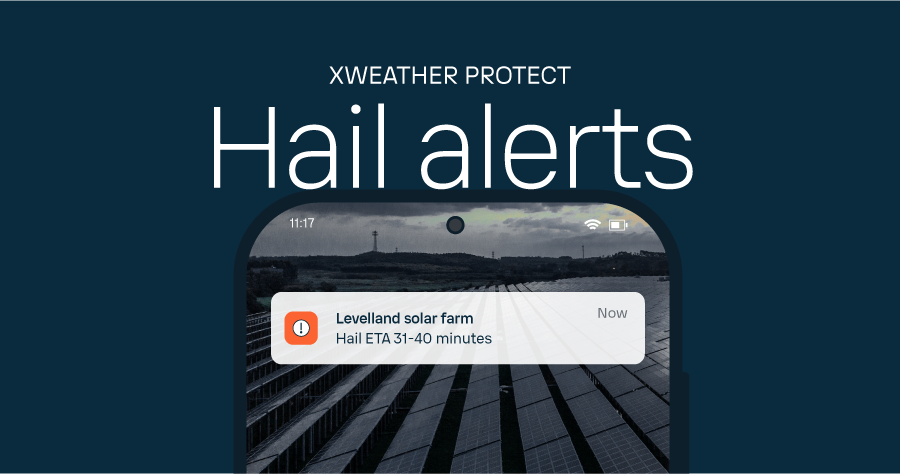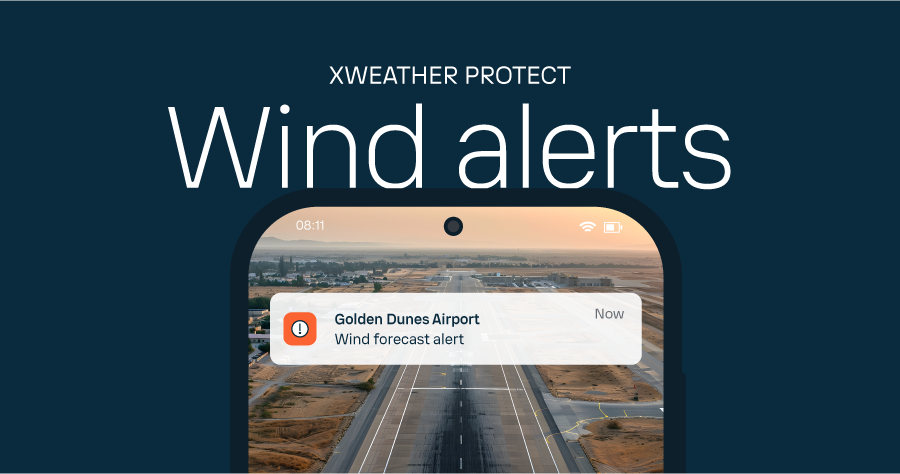Hailstones the size of baseballs slam into solar panels at 50 miles per hour, shattering millions of dollars in clean energy infrastructure in minutes. This isn't weather—it's an industry crisis.
When weather becomes a business crisis
The world is installing solar faster than ever, with PV expected to account for 80% of new renewable power between now and 2030. This rapid expansion is colliding with a harsh meteorological reality: the NOAA Storm Prediction Center recorded over 5,300 large-hail events in 2024, each one a potential multi-million-dollar threat to solar installations.
The geographic overlap amplifies the risk. According to the AXIS Global Energy Special Report, 60% of large hail reports in 2024 occurred in states with significant solar investment. Even more concerning, 85% of solar energy losses due to hail happen in just five states: Texas, Colorado, Nebraska, Kansas, and Oklahoma—regions at the heart of utility-scale solar buildout.
No wonder storm systems that once meant brief outages now threaten long-term performance and project viability.
Solar panels are inherently exposed. A direct hit from a hailstone larger than 2 inches (the size of a golf ball) can shatter tempered glass, crack silicon cells, and render modules inoperable. The worst part? Sometimes the damage isn’t visible. Microcracks can degrade performance silently and undetected for years. Reliable risk mitigation strategies, from hail alerts to stow protocols, are more crucial than ever.
Collision ahead – with a rising price tag
Here are just a few examples of what hail has already cost the solar industry:
| Date | Location | Hail impact | Estimated loss |
|---|---|---|---|
| May 2019 | Pecos County, TX Midway Solar | ~400,000 panels shattered by large hail | ~$70–80 million |
| June 2023 | Scottsbluff, NE NPPD Solar Farm | Severe hail damage to community array | Significant damage |
| March 2024 | Fort Bend County, TX Fighting Jays Solar | Thousands of panels destroyed; site at half capacity | Hundreds of millions |
Hail damage accounts for over 50% of all solar facility claim costs, even though it represents less than 2% of total claim counts. The average solar hail claim? $58 million.
Insurers have responded with premium hikes of up to 400% in high-risk regions, sub-limits on hail coverage, and, in some cases, refusals to insure at all. If hail isn’t addressed head-on, it threatens the long-term economics of solar development across vast swaths of the United States.
Why traditional weather models fail against hail
Forecasting hail is one of the toughest problems in operational meteorology. Numerical weather prediction (NWP) models struggle with the small-scale dynamics that drive hail-producing storms. Here's why:
Storm initiation is chaotic. Severe hail often emerges from supercell thunderstorms, but the exact timing and location of storm formation are very difficult to resolve, even at the resolutions of the most advanced models.
Hail is a product of vertical intensity. It requires powerful updrafts to loft water above the freezing level, and enough time aloft for that ice to grow. Most models can’t simulate this internal storm structure with precision.
Radar helps, but it's reactive. By the time hail is visible on radar, it’s already forming—or falling. Operational radar data lags in real time by several minutes. This time lag may prevent hail detection before hail reaches the ground.
Hail size reporting often depends on human observation. Observations are sparse in remote areas where solar farms are typically built.
When there is hail, there is always lightning, because they both originate from the presence of ice in the cloud.
That’s why lightning detection is essential, not just complementary, to forecasting hail. Hail-producing storms always involve lightning, and spikes in lightning activity are among the earliest indicators of the kind of intense updrafts that generate hail. Where radar and forecasting models struggle to provide precise, site-specific lead times, lightning offers a real-time proxy for storm severity. Hail alerts depend on detecting these electrical signals before hail forms or falls.
In short, no numerical model can say with 100% certainty: “Hail is coming in 45 minutes.” Therefore, implementing reliable mitigation strategies is imperative.
Four proven hail defence strategies
Despite the forecasting challenges, solar operators aren’t powerless. Leading companies are taking a layered approach to hail risk mitigation:
Stowing panels: Projects with tracker systems can pivot modules to a near-vertical hail stow position that dramatically reduces the surface area exposed to falling hail. One Texas project that implemented hail stow protocols for 90% of severe storm alerts cut its insurance premiums by 72%. Separately, AXIS found that stow strategies implemented consistently for just 3 out of 4 hail alerts were enough to materially reduce damage exposure and lower claims frequency.
Smarter monitoring: Real-time, site-specific hail alerts allow operations teams to act fast. Even 30–60 minutes of advance notice can buy the time needed to stow panels, move personnel to safety, and take the site offline.
Hardening hardware: Some developers now favor thicker glass, stronger module frames, and hail-rated panels in high-risk zones, accepting a small cost premium in exchange for long-term durability.
Embracing alternative insurance models: Parametric insurance, which pays out based on hail size thresholds rather than damage assessments, is gaining traction for its speed, certainty, and flexibility. According to AXIS, parametric triggers—such as 1.75” hail within a 10-mile radius—can cut settlement time from months to days, helping operators recover faster.
But none of these strategies work without one crucial enabler: reliable, site-specific, early warnings.
It’s about time. Xweather Protect is your early-warning engine.
Most alerting systems are either too generic (covering entire counties) or too slow (detecting hail only after it's forming).
Hail always forms in thunderstorms, and where there’s hail, there’s lightning. Spikes in lightning rates are among the earliest indicators of a strengthening updraft, the key driver behind hail formation.
With new lightning data arriving in a matter of seconds, our forecasts are improved in their quality and update rates.
Vaisala Xweather is transforming how the solar industry makes critical stow decisions by adding accurate global lightning detection data as another variable besides radar-based information to understand the growth and decay of storms. With new lightning data arriving in a matter of seconds, forecasts improve their quality and update rates. And for many countries, a lightning forecast alone can provide protection in the absence of radar-based information.
Xweather Protect pioneers a new approach, harnessing the world's most accurate lightning detection network to predict hail up to 60 minutes before impact.
World’s most accurate lightning detection gives you the upper hand
Every hail-producing storm generates distinctive lightning patterns. As updrafts intensify, in-cloud lightning spikes dramatically, 30–60 minutes before hail reaches the ground. This data gives you the early warning window that radar and weather models alone can't match.
In North America, Xweather Protect uses Vaisala's precision lightning detection network. With greater than 95% detection efficiency and locational accuracy within 100 meters, this network is trusted by the National Weather Service, Federal Aviation Administration, the United States Air Force, and NASA to deliver the most accurate and reliable lightning detection data. Combined with radar and Xcast forecasting technology, Xweather Protect offers site-specific hail alerts up to 60 minutes in advance, with a forecast that's updated every two minutes.
Built for solar operations
Unlike generic weather apps, Xweather Protect was designed for asset operators:
Precise coverage: Alerts with storm arrival times for your solar project's exact location.
Operational dashboard: Hail, wind, and lightning threats in one view, plus notifications when the risk has passed.
Insurance documentation: Automatic logging of alerts and post-storm lightning incident reports.
No hardware: Fully cloud-based with mobile access and API integration.
The bottom line
Hail may be impossible to stop, but with the right tools, it is possible to see it coming and act decisively. For solar operators, that’s the difference between a short-term decrease in output and a multi-million-dollar loss.



